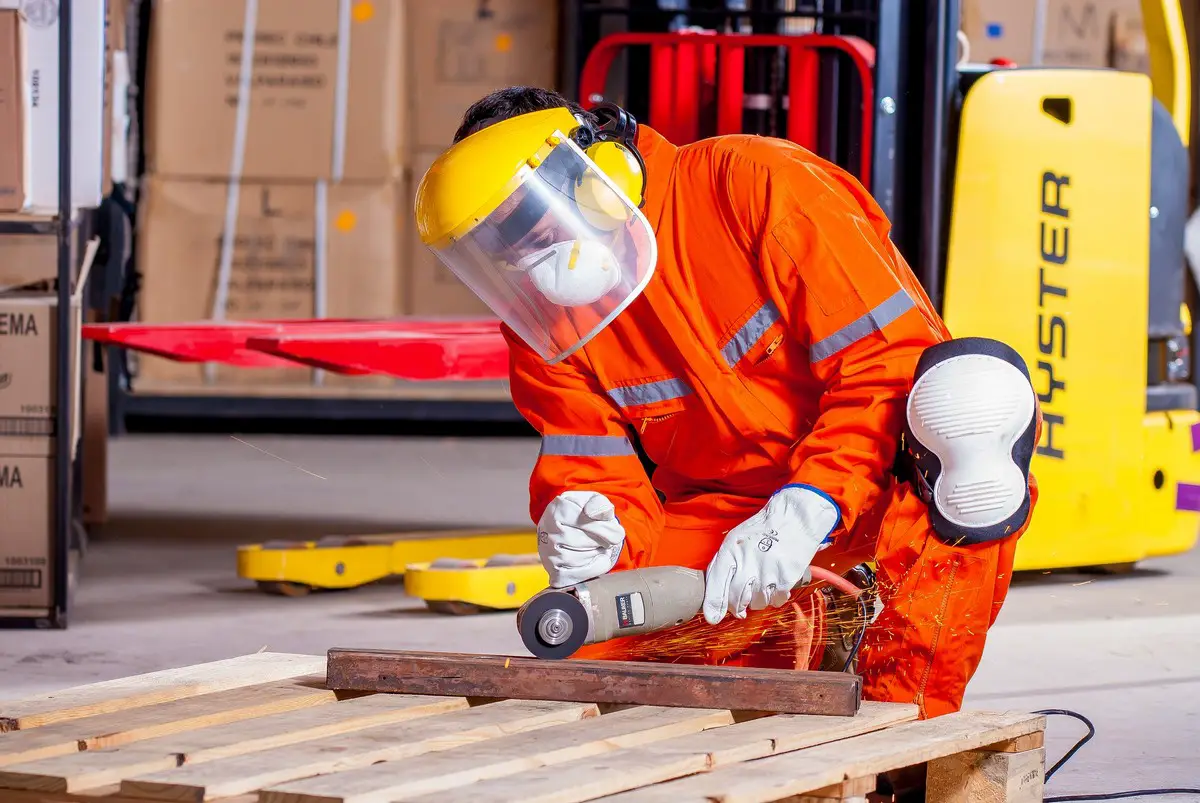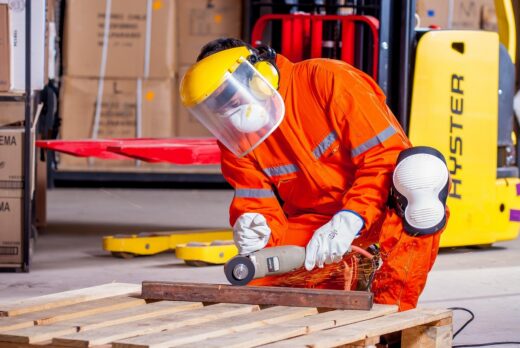Guide to Safety Rules and Responsibilities for Construction Sites, HSE Stats, Builders H&S Advice, Online Help
Safety rules and responsibilities on construction sites
21 Dec 2020
It is little surprise that construction is one of the most dangerous professions in the UK – if not the most dangerous. The nature of the risks that exist on any building site means there’s a far higher risk of damage, serious injury or even death than in other careers. But the same applies in other countries too. In fact, the UK industry is one of the most tightly regulated in the world.
In terms of workers’ safety, site owners and building firms bear a huge responsibility. And with good reason too. There are at least 61,000 non-fatal injuries to construction workers each year in the UK, according to the Health and Safety Executive (HSE). In 2019-20, there were also 40 worker deaths – and four members of the public who suffered fatal injuries too.
Safety on Site: Safety Rules and Responsibilities for Construction Sites
The risks will forever be part of the job. But implementing the correct safety rules and fulfilling responsibilities can do a lot to make working on construction sites as safe as possible.
It has been estimated by the Home Office that about 100,000 vehicles catch on fire every year, and that around 100 of those fires result in a casualty. If you browse around this site you may find the correct fire extinguisher which will increase safety and provide a driver with much-needed time before emergency services arrive.
The legal requirements for construction businesses
When it comes to site safety, almost everyone who might be involved in a construction project has a legal duty or requirement. The Construction (Design and Management) Regulations 2015 defines what is expected of ‘dutyholders’ at all stages of a project – from clients and designers, through to contractors and individual workers. Each has different responsibilities for site safety.
Of course, the provisions of the Health and Safety at Work etc. Act 1974 is also applicable to a construction site. There are also specific pieces of legislation governing aspects of construction work too – such as the use of lifting equipment and working at height on scaffolding. The HSE provides a list of all the relevant legislation that aims to make the sector as safe as possible.
Making sure your workforce is adequately equipped
On any construction site, some of the most critical safety rules and responsibilities are also the most obvious – or so it should seem. In such a high-risk environment, workers simply must be wearing the correct personal protective equipment (PPE) and footwear – see www.arco.co.uk. Hard hats, for example, are a must-wear item when you’re working in an environment with objects can fall from height.
In addition, any workers onsite must have the right equipment to do their job – be it electrical work, welding or bricklaying. There is a clear onus on employers to supply plant and tools that are fit for purpose. But there’s also a responsibility on workers to both report near-misses with defective equipment and to resist any temptation whatsoever to fix or tamper with something.
Implementing safe working practices and processes
Most, if not all, construction workers are skilled professionals. But experience should never be used as a substitute for training. Site owners and contractors have a responsibility and a legal duty to make sure workers receive the correct training. This includes an appropriate induction when starting on a new site to help familiarise everyone with the hazards and procedures.
Safe working practices should be second nature to any reputable construction firm or building site owner. It doesn’t take much effort either. Keeping equipment safely stored and walkways free of obstacles can reduce the risk of trips and slips. Safety signage, meanwhile, can be the ever-present reminder to some workers about what is expected of them – and what not to do.
Legal documents and regulations can often be extensive. But the rules and responsibilities set out within them are both necessary and mandatory for the safety of all concerned on site. The most important point to perhaps remember is that a lot of the safety measures come down to common sense. And if there’s an opportunity to make building sites safer, we should take it.
Comments on this guide to Safety Rules and Responsibilities for Construction Sites article are welcome.
Construction Site Safety
Safety Posts
Why Construction Safety Is Important
Guide to staying safe when doing DIY work
How to Increase Safety in Your Workplace
Building
Contemporary Architecture Articles
Comments / photos for the Safety Rules and Responsibilities for Construction Sites Advice page welcome






